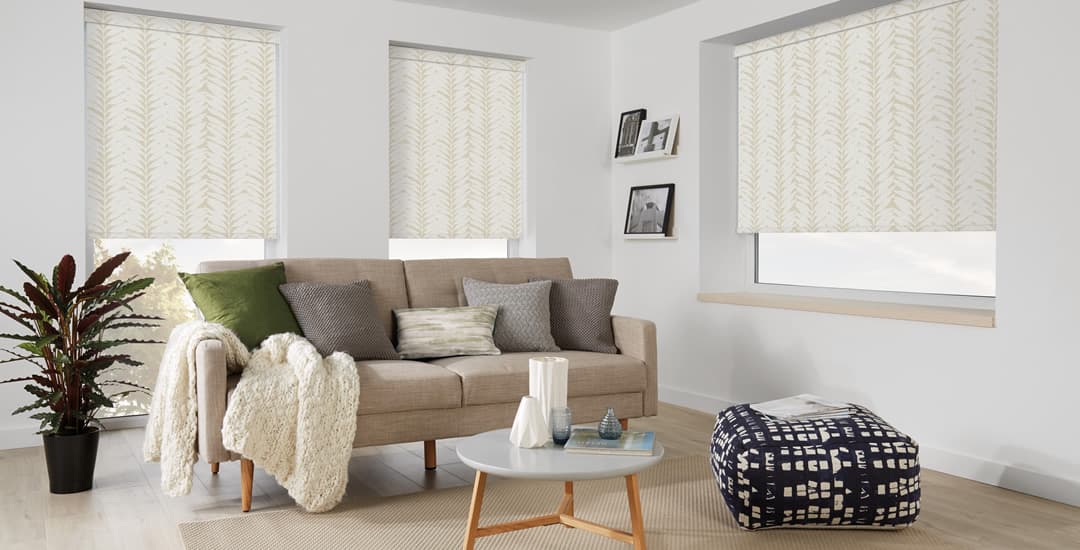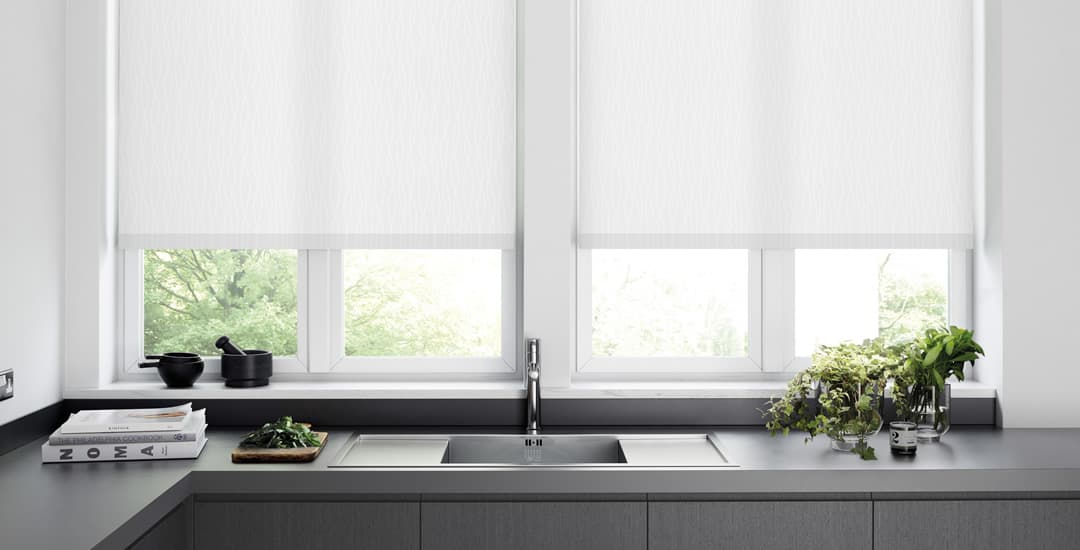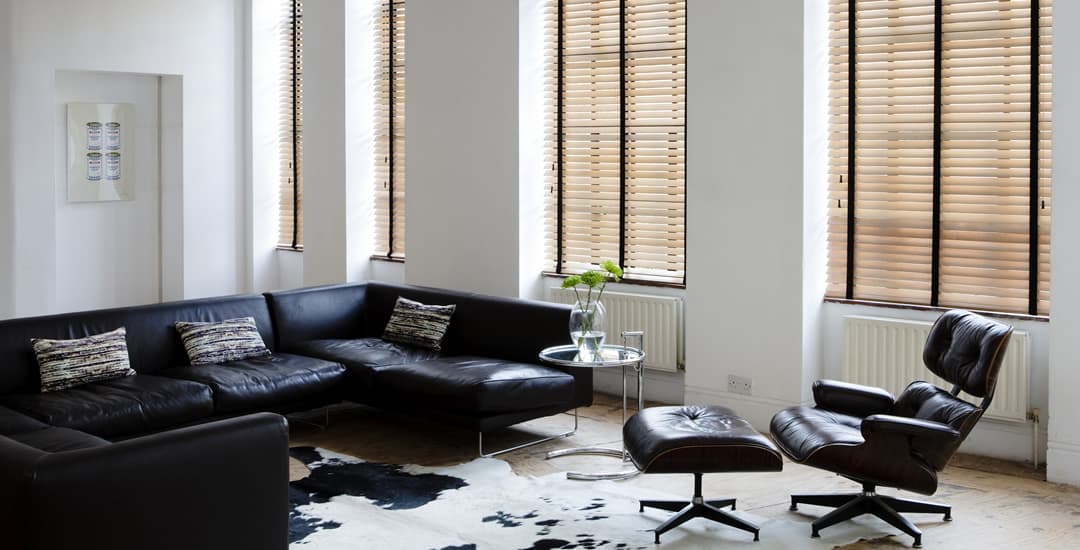
Pretty much any colour of your choosing; much as “black goes with everything” when it comes to clothes, the same goes for white when it comes to walls! There are no colours or shades that don’t pair well with white per se; but the chances are that the other things in the room aren’t all going to be white too, which means that matching your blinds to the style and colour theme that the rest of the room is important too.
This blog post will talk about how to decide what colour blind goes with white walls based on a number of factors, from whether or not you’re talking about a really bright, perfect shining gloss white, or a softer, more muted satin or matte white, among other things.
How to determine what colour blind goes with white walls in an empty room
As I mentioned above, you need to think about the colour scheme and vitally, style of the rest of the room if the walls are white before you can make a decision on the right colour for your blinds.
But if you’re starting with an empty room (perhaps as a first-time buyer, or just because you want to redecorate with new things from scratch) then beginning with the blinds is going to drive or dictate in many ways the colours or mood for rest of the things you add to the room later.
If you already have furniture or accent colours or some kind of theme in situ, things should be much easier!
If you are indeed starting with an empty room with white walls and nothing else in it, here are some of the things you need to consider to determine what colour blind will work with the white.
First up: What are the white walls themselves all about?
For instance, are they painted white because that provides a neutral, blank canvas that you can work in to virtually any style or colour scheme, or is the white itself a statement of clean minimalism?
The sort of shade and texture of the white is important too; the idea of “shades of white” might seem a bit of an oxymoron, and it’s not a large spectrum; for instance you couldn’t class even the palest cream as a shade of white because technically it isn’t, and also, because even the slightest hint of colour in white gives it a tone – cool or warm – which is lacking in a true white.
If you’re looking at your walls anew now and thinking “actually maybe that’s cream/magnolia/the palest tint of blush or beige,” determine if it’s cool or warm toned before you start thinking about colours to work with it.
If you’re confident that your white really is a white; the next path you want to head down is whether you intend to play up the white, openness of the wall space, or use it as a blank canvas to make colours pop and to make your décor really stand out. What you determine using benchmarks like these might quickly take a whole range of colours or hues off the table, narrowing down your choices.
Finally, the texture of the walls; smooth or graduated/rough/wallpapered underneath, gloss, satin, or matte, and the other things that add depth to white and differentiate the effect of different whites come into play too.
For instance, if your wall has a soft sheen to it, a blind with a satin finish would work well, while if the walls are rough or textured, a blind with a bit of depth to it would pair well in turn.
Can you have white blinds with white walls?

This really depends on what you want to achieve. Some of the reasons you might pick white blinds for white walls could be to make the walls look larger, and the room itself more spacious and less cluttered; this may be what you’re looking for in a small room.
Also, if your general theme is either minimalistic or somewhat futuristic, white on white can work too.
However, white blinds on white walls can also work in other styles; for instance, if you want to make the room feel like a fusion of indoors and outdoors with lots of natural materials like wooden furniture and ornaments, using white wooden blinds can look fantastic; they blend with the wall but don’t get eaten up by it, as their slats and depth give them some presence.
If you’re not quite sure about white blinds on white walls, or want to know about some of the inadvertent and not necessarily desirable results this can achieve if it’s not executed well or with a plan in mind…
White blinds on white walls may look a little clinical, cold, one-dimensional, or as if this is the home of a neat freak who will bury you in the basement if you happen to spill something. None of these things are inevitable even if you happen to end up with white on white largely by accident without a real direction in mind for the style of this, but they are points to bear in mind and consider.
There’s no design etiquette that dictates that choosing white blinds is the best or most stylish choice against a backdrop of white walls, nor that this is an utter design faux-pas; in my experience, it’s less common than choosing a coloured blind for a white wall, but not unheard of.
TL;DR: Can you please just suggest what colour blind goes with white walls!?

I realise that I’ve almost reached the end of what I wanted to say and have yet to suggest an actual colour for blinds that works well with white walls, which is making me feel a little bit like I catfished you into reading this by promising information that I don’t intend to give.
However, any colour of blind works with white walls if all you’ve got going on is the wall and the blind; with one exception; warm-toned cream colours don’t tend to work well with white. The white can make the cream look dingy, while the cream can make the white look overly glaring.
Even the faintest, softest blush pink or peach blinds can work with white walls, as can the deepest blue, either a bold or neutral print, a pastel, or a really loud colour.
How to check what colour blind goes with white walls before you buy
It’s a good idea to determine if the colour, shade, or design of blind you’re planning on buying actually suits your walls and the wider décor or the room before rather than after you spend a potentially large amount of money on it.
While most blinds companies (us too – I mean, we pride ourselves on our customer service but there are limits, Karen…) won’t be willing to make a set of blinds bespoke for you and accept them back for a refund if you don’t like them when you see them, you can ask for samples.
Any window blinds company that actually wants to win your custom will offer free fabric or material samples for every blind they offer, so that you can get up close and personal with it in your home and see if it presses the right buttons in terms of colour, texture, and quality.
We’ll send you a literally unlimited number of samples upon request without even asking for the postage cost; and we’ll ensure that they’re large enough samples so that you can actually tell what you’re seeing and make an informed choice from them, which isn’t generally possible if the sample you receive is the size of a postage stamp!




